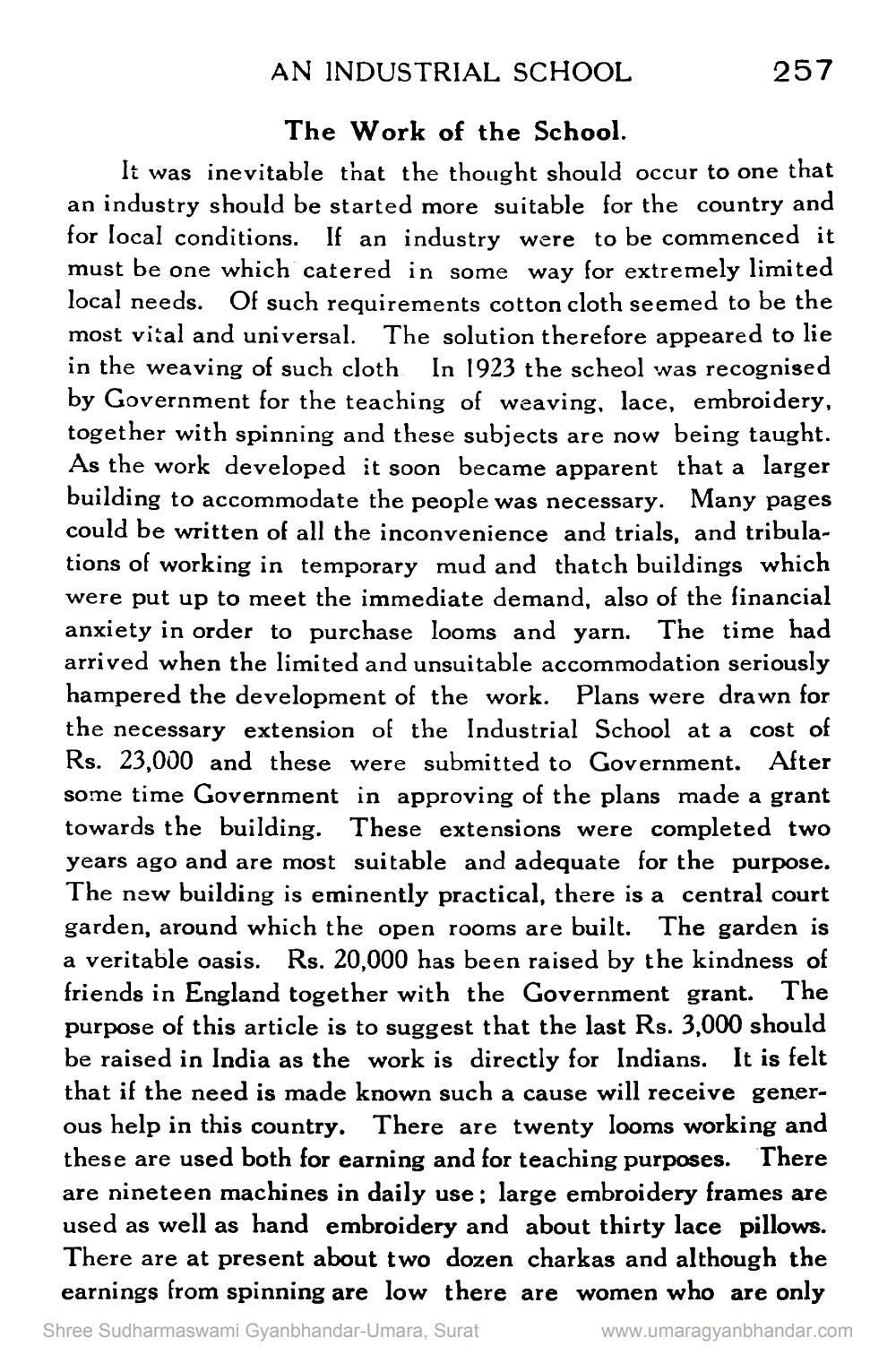________________
257
AN INDUSTRIAL SCHOOL
The Work of the School. It was inevitable that the thought should occur to one that an industry should be started more suitable for the country and for local conditions. If an industry were to be commenced it must be one which catered in some way for extremely limited local needs. Of such requirements cotton cloth seemed to be the most vital and universal. The solution therefore appeared to lie in the weaving of such cloth In 1923 the scheol was recognised by Government for the teaching of weaving, lace, embroidery, together with spinning and these subjects are now being taught. As the work developed it soon became apparent that a larger building to accommodate the people was necessary. Many pages could be written of all the inconvenience and trials, and tribulations of working in temporary mud and thatch buildings which were put up to meet the immediate demand, also of the financial anxiety in order to purchase looms and yarn. The time had arrived when the limited and unsuitable accommodation seriously hampered the development of the work. Plans were drawn for the necessary extension of the Industrial School at a cost of Rs. 23,000 and these were submitted to Government. After some time Government in approving of the plans made a grant towards the building. These extensions were completed two years ago and are most suitable and adequate for the purpose. The new building is eminently practical, there is a central court garden, around which the open rooms are built. The garden is a veritable oasis. Rs. 20,000 has been raised by the kindness of friends in England together with the Government grant. The purpose of this article is to suggest that the last Rs. 3,000 should be raised in India as the work is directly for Indians. It is felt that if the need is made known such a cause will receive generous help in this country. There are twenty looms working and these are used both for earning and for teaching purposes. There are nineteen machines in daily use; large embroidery frames are used as well as hand embroidery and about thirty lace pillows. There are at present about two dozen charkas and although the
earnings from spinning are low there are women who are only Shree Sudharmaswami Gyanbhandar-Umara, Surat
www.umaragyanbhandar.com




